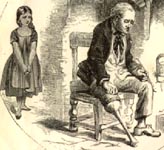Mission Houses Museum [HI]
Built between 1821 and 1841, the three mission houses that make up the Museum served as homes and workplaces for the first Christian missionaries to travel to the Hawaiian Islands. The Frame House (Ka Hale La'āu), was shipped around Cape Horn from Boston in 1820 and is the oldest wood house in Hawai'i. The Chamberlain House (Ka Hale Kamalani), built of coral blocks in 1831, was both a family home and storehouse for mission supplies. The third building, also of coral blocks, completed in 1841, today functions as the Printing Office (Ka Hale Pa'i). A working replica of the first printing press to be brought to Hawai'i is demonstrated there on a regular basis. In addition, the Museum grounds are the location of the Hawaiian Mission Children's Society (HMCS) library. Among the library's artifacts are the earliest books printed in the Hawaiian language. These books were used by missionaries and scholars alike in church and school.
The museum offers exhibits, tours, demonstrations, workshops, lectures, and other educational and recreational programs.
